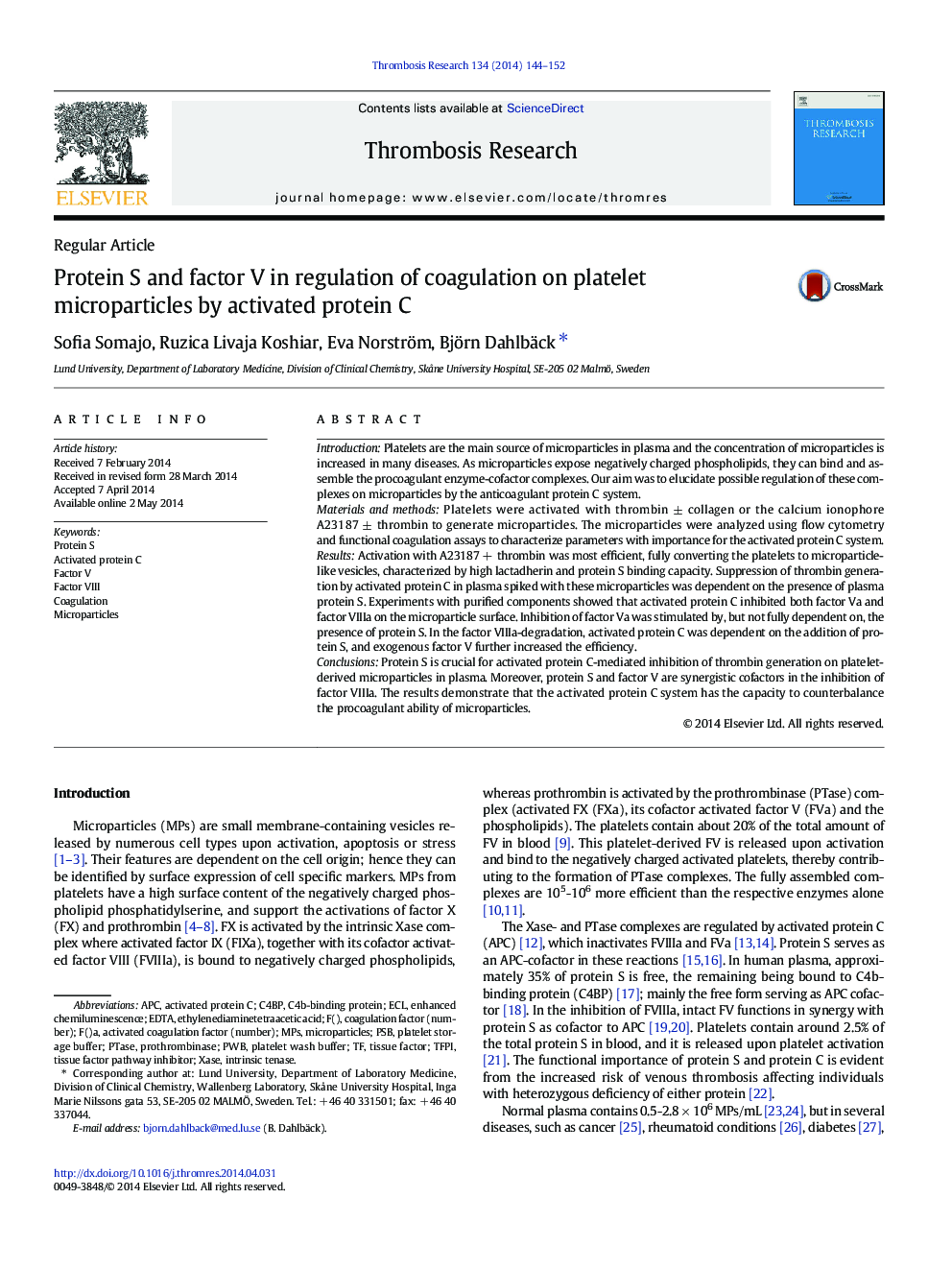| Article ID | Journal | Published Year | Pages | File Type |
|---|---|---|---|---|
| 6000857 | Thrombosis Research | 2014 | 9 Pages |
IntroductionPlatelets are the main source of microparticles in plasma and the concentration of microparticles is increased in many diseases. As microparticles expose negatively charged phospholipids, they can bind and assemble the procoagulant enzyme-cofactor complexes. Our aim was to elucidate possible regulation of these complexes on microparticles by the anticoagulant protein C system.Materials and methodsPlatelets were activated with thrombin ± collagen or the calcium ionophore A23187 ± thrombin to generate microparticles. The microparticles were analyzed using flow cytometry and functional coagulation assays to characterize parameters with importance for the activated protein C system.ResultsActivation with A23187 + thrombin was most efficient, fully converting the platelets to microparticle-like vesicles, characterized by high lactadherin and protein S binding capacity. Suppression of thrombin generation by activated protein C in plasma spiked with these microparticles was dependent on the presence of plasma protein S. Experiments with purified components showed that activated protein C inhibited both factor Va and factor VIIIa on the microparticle surface. Inhibition of factor Va was stimulated by, but not fully dependent on, the presence of protein S. In the factor VIIIa-degradation, activated protein C was dependent on the addition of protein S, and exogenous factor V further increased the efficiency.ConclusionsProtein S is crucial for activated protein C-mediated inhibition of thrombin generation on platelet-derived microparticles in plasma. Moreover, protein S and factor V are synergistic cofactors in the inhibition of factor VIIIa. The results demonstrate that the activated protein C system has the capacity to counterbalance the procoagulant ability of microparticles.
